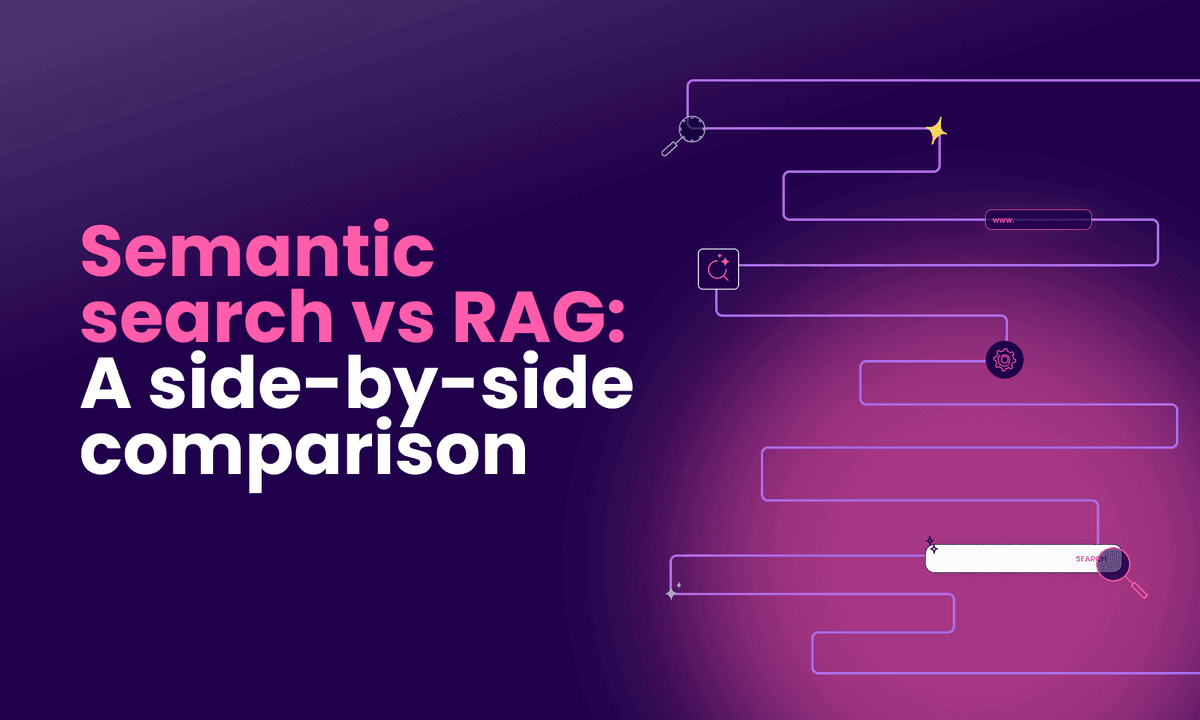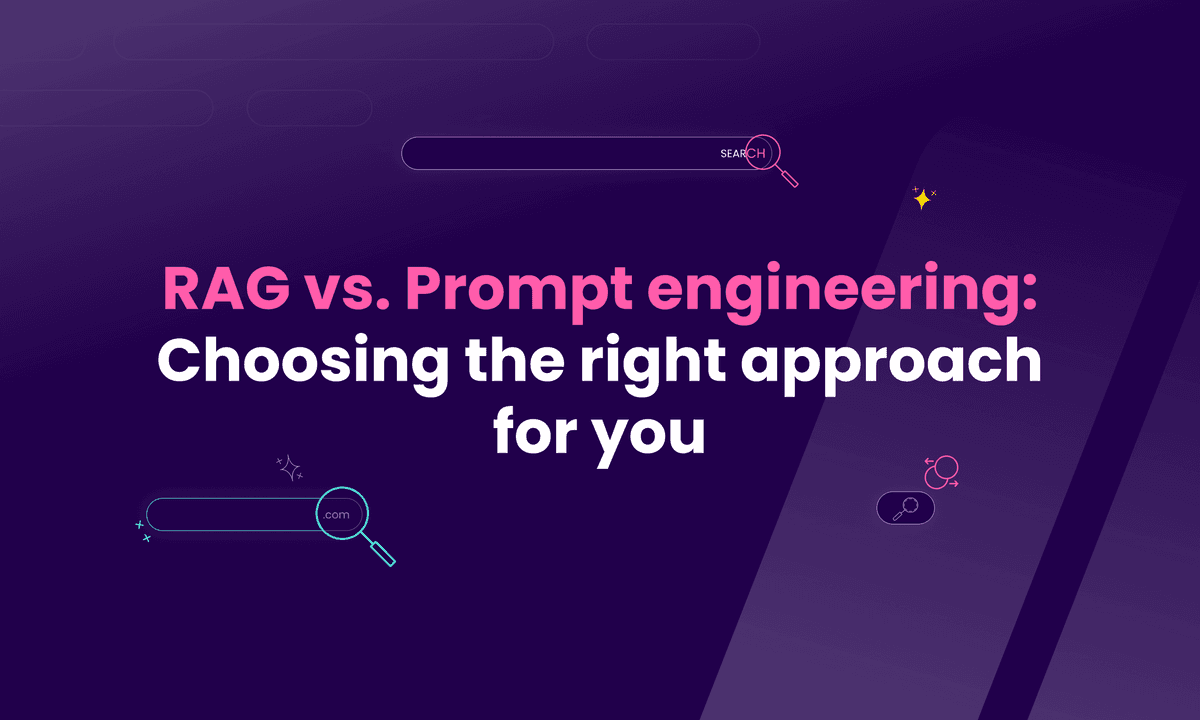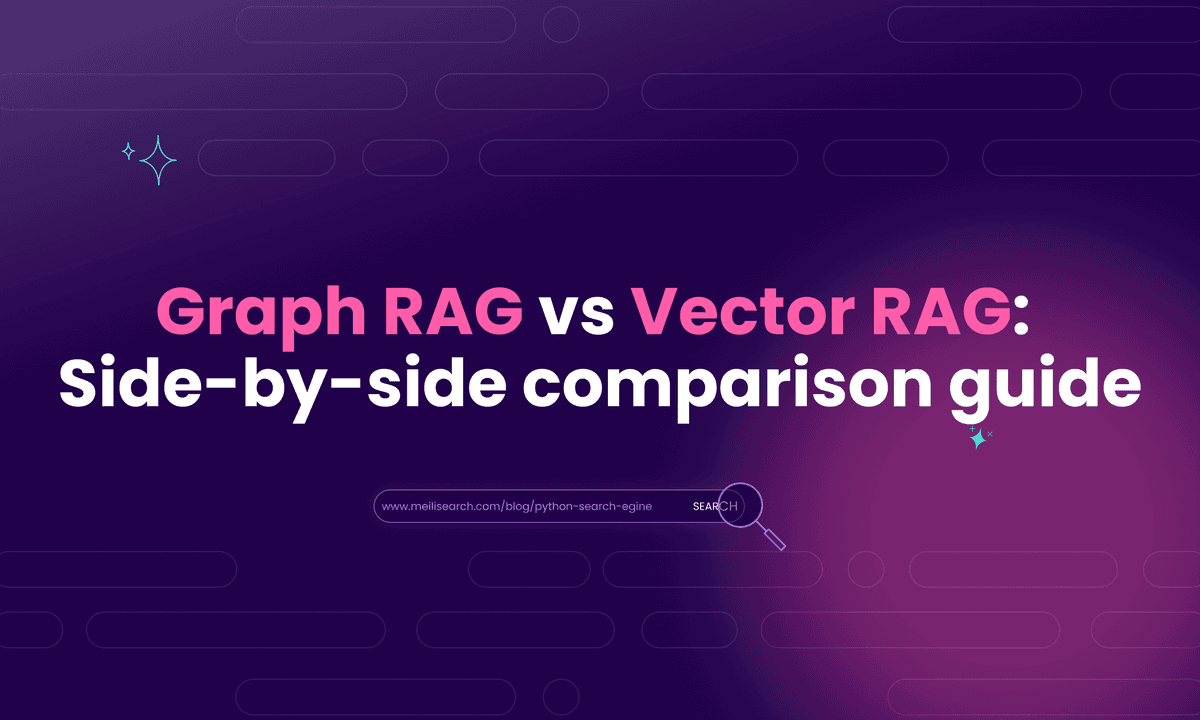Fine-tuning vs RAG: Choosing the right approach
Explore the key differences between fine-tuning and RAG. Find out which approach best suits your needs and learn how to improve performance, accuracy, and cost.

Here's a counterintuitive truth about modern AI development: the most sophisticated language models often perform worse than simpler alternatives when deployed in production.
Companies spend thousands of dollars fine-tuning state-of-the-art models, only to discover that a lightweight approach using RAG delivers better results at a fraction of the cost.
The fine-tuning vs RAG debate isn't just about technical preferences. It's about understanding when complexity becomes your enemy and when simplicity scales. Most teams make this choice based on outdated assumptions about what "better AI" actually means in real-world applications.
Fine-tuning vs RAG: understanding the key differences
Deciding how to adapt a LLM involves choosing between fine-tuning, which builds deep expertise into the model, and Retrieval-Augmented Generation (RAG), which links the LLM to the latest relevant information. Both aim to enhance the LLM’s capabilities but use different approaches.
What is retrieval-augmented generation?
Imagine a top student, not going back to class, but instead gaining access to an endless, well-organized library and a team of expert researchers. That’s the idea behind RAG.
Instead of embedding all knowledge within the model, RAG lets the LLM pull relevant information from external sources right before responding. These sources can include your company’s knowledge base, real-time news feeds, or large document collections.

RAG works by:
- Breaking external data into manageable pieces and converting each into a numerical “embedding” that captures its meaning.
- Storing these embeddings in a specialized vector database designed for fast searches.
- Turning the user’s query into an embedding.
- Searching the database to find the most relevant information.
- Including this retrieved data in the prompt given to the LLM, providing up-to-date, contextual knowledge.
- Having the LLM craft a response using both its built-in understanding and the freshly retrieved information.
Keep in mind that RAG responses may take a bit longer to generate as the system needs time to search through external databases and retrieve relevant information before the LLM can craft its response. The exact delay depends on your RAG system's architecture and the size of your knowledge base.
RAG grounds responses in specific, current, and verifiable facts, reducing the risk of outdated or inaccurate answers. It updates knowledge in real time without changing the model itself.
Curious about implementing a RAG workflow in practice? Explore this step-by-step guide on how to build a RAG pipeline.
What is fine-tuning?
Take the same highly educated graduate. Fine-tuning sends him to a specialized training program. You take a pre-trained model and train it further on a smaller, carefully chosen dataset tailored to your field or task. This could include areas such as legal analysis, medical interpretation, or your company’s unique language.
The goal is not just to add facts, but to adjust the model’s internal workings so it becomes an expert in your area. This process involves providing targeted examples and tweaking its internal settings while preserving its broad knowledge. The result is a model that understands the subtle details of its specialty, often improving accuracy significantly.
It is especially powerful for shaping the model’s output style, tone, and formatting rules, enabling consistent answers. Fine-tuning also leads to low-latency inference: because curated knowledge is baked directly into the model, there’s no delay from pulling external data.
Additionally, fine-tuned models operate independently of external databases, providing advantages in privacy, offline capability, and cost-effective serving at scale. If you need your AI to “think and speak” like an expert, or to deliver high precision on repetitive, clearly defined tasks, fine-tuning delivers that lasting edge.
Looking for an easy way to start fine-tuning your own OpenAI models? Check out OpenAI’s fine-tuning guide for straightforward, step-by-step instructions and best practices to optimize your models for your unique use case.
Choosing the right approach: fine-tuning or RAG?
Deciding between fine-tuning and Retrieval-Augmented Generation (RAG) means selecting the best tool for your specific challenge. Each method has strengths that fit different scenarios. Consider these key factors to choose the best approach (or a combination) for your project and users.

Data freshness and update frequency
If your AI assistant discusses stable topics like historical events, fine-tuning on curated texts creates a consistent, knowledgeable expert. The information becomes part of the model.
For real-time tasks like stock market analysis or breaking news summaries, the data changes constantly. Fine-tuning would require frequent retraining, which is impractical. RAG excels here by connecting to dynamic external databases. It pulls the latest articles, market data, or updates as they happen. RAG keeps information current without constant retraining, making it ideal for applications needing up-to-the-minute data.
Domain specificity and task complexity
Consider how specialized your AI must be. For a virtual legal aide needing deep contract law knowledge, fine-tuning is best. It helps the model absorb proprietary data, jargon, and reasoning patterns. This creates an expert that understands facts, style, tone, and domain rules.
Fine-tuning suits tasks requiring high precision in stable, complex fields like medical text interpretation or compliance.
RAG works well for broader domains or when expertise involves gathering information from many sources. For example, a customer support bot for a fast-changing SaaS product benefits from RAG. It accesses the latest FAQs, troubleshooting guides, and community discussions, providing relevant answers even for new issues.
RAG focuses on finding the right information rather than becoming the ultimate expert.
Cost and resource considerations
Fine-tuning large models demands a significant upfront investment (a bunch of GPU computes time for each training). It also requires careful curation, cleaning, and annotation of high-quality, domain-specific datasets, which can slow progress. However, once fine-tuned, the model runs efficiently without relying on external retrieval.
RAG lowers the barrier to entry by starting with a pre-trained base model. The main costs involve building and maintaining retrieval infrastructure like vector databases and indexing pipelines. While it avoids frequent retraining, ongoing inference costs may be higher due to retrieval steps. Fine-tuned models risk becoming outdated as base LLMs improve, requiring further investment. RAG offers flexibility and long-term efficiency in fast-changing environments.
Data governance and security implications
Data location and access matter, especially in regulated industries or with sensitive information.
Fine-tuning simplifies data governance and privacy. The entire process can stay within your infrastructure, embedding knowledge in the model. Once deployed, it can operate offline without external access. This helps comply with regulations like GDPR or HIPAA and gives tighter data control.
RAG interacts with external knowledge bases, which introduces privacy and security concerns. You must ensure retrieval doesn’t expose sensitive data and that external sources are secure and compliant. Using third-party APIs or databases subjects you to their security and data policies. RAG requires robust retrieval pipelines and careful data residency and access controls to maintain security.
Performance, latency, and scalability
User experience depends on response speed and accuracy. Fine-tuned models deliver faster responses because answers come directly from internal knowledge. This low latency suits real-time applications like chatbots or instant translation. Fine-tuned models also offer high precision for trained tasks.
RAG adds a retrieval step before generating responses, which increases delay. Even with fast search engines, RAG responses can be 30-50% slower than fine-tuned models. This delay may be acceptable for detailed reports or research but can hinder real-time use. Scaling RAG requires managing both the LLM and retrieval system, including vector databases and indexing.
Hybrid approaches: combining fine-tuning and RAG
Combining fine-tuning and RAG creates a more powerful system that leverages the strengths of both approaches.
Fine-tuning provides deep domain expertise and specialized language understanding, while RAG ensures access to current, relevant information. This hybrid approach delivers enhanced contextual understanding, improved accuracy, and more nuanced outputs. For example, a financial advisory bot can combine expert knowledge with real-time market data.
Implementing hybrid systems requires careful design, beyond simply adding RAG to a fine-tuned model. Emerging strategies include Domain-Adaptive Pre-training (DAP), Retrieval Augmented Fine-Tuning (RAFT), and Hybrid Instruction-Retrieval Fine-Tuning.
Real-world applications, such as Document Retrieval-Augmented Fine-Tuning (DRAFT) for compliance assessment, show promising results with 7% improved correctness over baseline models.
Success depends on preventing fine-tuned models from over-relying on internal knowledge while ignoring retrieved information.
Making the right choice for your AI strategy
The fine-tuning vs RAG decision ultimately comes down to understanding your specific use case, data requirements, and long-term goals.
While fine-tuning excels in static domains requiring deep expertise and consistent outputs, RAG shines when you need dynamic, up-to-date information with transparent sourcing.


